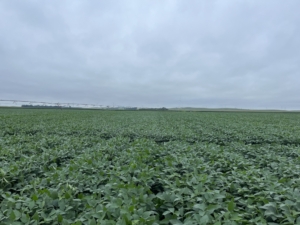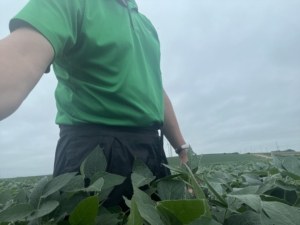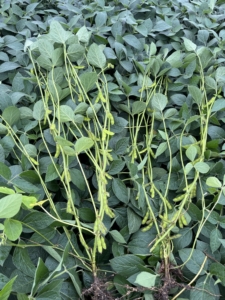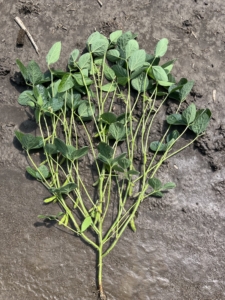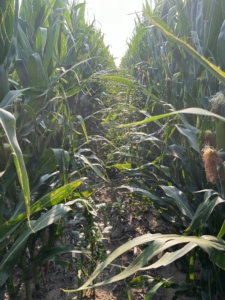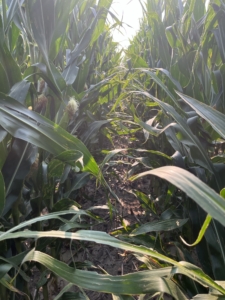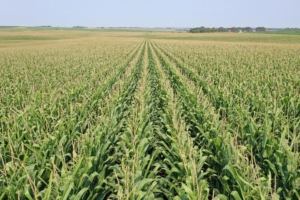
TEMPERATURES & GDU ACCUMULATION:
As of August 25th, we have accumulated approximately the following for Growing Degree Units in 2024:
Planting Date GDD’s2024 Average GDD Departure from average
April 23 2138 2180 -42 (-2 days)
May 4 2054 2100 -46 (-3 days)
May 14 1983 2024 -41 (-2 days)
Since the last update, we have lost about 3-4 days of growing season. From being even-to-1-day ahead, we are now 2-3 days behind the average. We accumulated approximately 14 GDU’s/day over last 10 days versus an the average of 20/day….which equates out to 3 days lost. We are 6-8 days behind 2023. The past few days of heat is helping as we are now seeing a milk line on most of the April planted fields and the May planted is starting to show a good Dent.
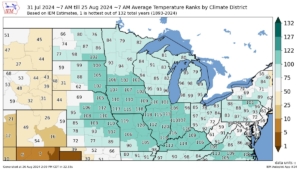
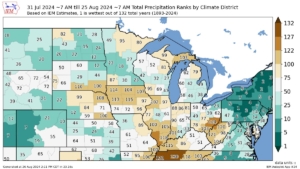
The two maps above show average temperature and total precipitation ranks by climate district, for the current month of August 2024. Note how cool the whole corn belt has been for August. We had the 105 warmest August in past 132 years, and the 107 wettest August in the same 132 years. Note the drought area forming over Nebraska and Iowa… Current forecasts are for continued cooler weather through the first week of September. While this means very little stress on the crop, we are starting to push up against frost dates the longer this trend continues.
Crop & Weather Update:
- Much of the corn crop in the area is at Beg. Dent to 1/8 to 1/4 to 1/3 milk line depending upon planting date and hybrid maturity. As mentioned above, this is behind the average and quite a bit behind from the past few years. Soybeans are in the R6 (Full Seed) stage with some early planted fields, with early maturity varieties, just starting to get that off-green color.
- Temperature forecasts over the next 10 days (out to Sep 4) are predicted to give us 250 GDU’s. Add this to the above GDU numbers and we have the April planting date showing close to 2400 GDUs and the May 4 showing over 2300, and May 14 just over 2200 GDU’s. These numbers are still shy of maturing 105 day hybrids. In other words, we are still looking at needing, at the minimum, an average to above-average September to finish the corn crop as we have come to expect for best yields, etc. Keep in mind, that the best yields usually happen when we accumulate more GDU’s than the hybrid is rated for, before physiological maturity occurs. The longer we can extend grain fill, the heavier the test weights and the deeper the kernel which all adds up to increased yield….and better standability for harvest…. At this rate, harvest will occur later than we have experienced the past few years.
- Something to keep in mind as we finish out the next few weeks…. for 250-300 bu. each day from R4 (Dough) to the end is worth 3.5-4 bushels. At half milk line (R5.5), it’s still accumulating up to 2 bu/day of kernel weight. At R5.5, you want to see green stalks to the ground, and green leaves from the ear to the top of the plants. In other words, the goody (or ‘how much profit’) is still being determined over these weeks….don’t shutoff to early…
- Sunlight has greatly improved over that past few days. Hopefully this trend will occur over the next few weeks, as increased sunlight can help offset a little the lack of heat….
- Water needs: Below chart shows total water needs for corn during these last growth stages.
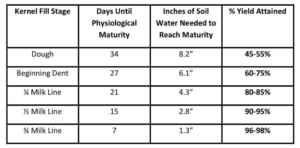 From the chart, it shows 1/4 mile line needing 21 days to maturity….which means we still have three weeks (and I would like to see 4 weeks for best tst. weights, etc.) before crop is finished….don’t shutoff too early. At R6, soybeans still need 2-3 inches to finish. All of these figures are dependent upon temperature and humidity
From the chart, it shows 1/4 mile line needing 21 days to maturity….which means we still have three weeks (and I would like to see 4 weeks for best tst. weights, etc.) before crop is finished….don’t shutoff too early. At R6, soybeans still need 2-3 inches to finish. All of these figures are dependent upon temperature and humidity - Disease Update: Corn – overall leaf disease pressure continues to be on the low side for infestations. Southern Rust is around, but has yet to ‘blow up’ in the area. Gray Leaf Spot and Northern Corn Leaf Blight are still present, but here too, we have not seen heavy outbreaks of either disease. Soybeans – White Mold is starting to show up in some area fields, mainly in the lower areas of the field and those varieties prone to lodging. Overall, we have much less pressure in area fields from this disease than last year. SDS is beginning to increase in the area as well. Again, many factors influence this disease such as soil conditions at planting, early stress that hampers root development and varietal tolerance. High-rate Ilevo seed treatment works very well on this disease….we see very low levels of SDS in those fields treated for SDS.
Corn & Soybean Insect Update
- Western Bean Cutworm larvae continues to be present in many sandy fields that were not treated. As usually happens in cool summers, their flight has been very extended and we continue to see some small larvae show up in ear tips….not a lot, but they can be found in scattered spots of many fields. Those fields that were treated are clean.
- Spider Mites are showing up now in very low numbers. However, we do not expect this insect to impact the crop.
- Dectes Stem Borer numbers in area fields are again higher than they have been in the past. This insect will be heaviest on field borders. The main impact from this insect is loss of yield at harvest time from stems breaking off and no longer able to be harvested. Best management practice is early harvest before the stems get dry and brittle…keep this in mind as harvest nears. See the link for more info: Dectes Stem Borer in Soybeans
- Soybean Aphids are showing up in heavier numbers than we have seen for many years…however, infestations have been spotty and overall insect levels have been low…but they are around…
Reminder that the Pioneer Innovation Plot Tour is scheduled for Wednesday evening, September 4th, with meal @ 6:30pm and plot tour @ 7pm. Jim/Dave Schiltmeyer Farm south of Elgin on Hwy 14….then east on 838 Rd for 3/4 mile. Come see the latest in corn hybrids from Pioneer, with the new Vorceed and Powercore technologies.
Please contact us with any questions or concerns you may have. Thank you for the support!!
Starman Seed Service, Inc.

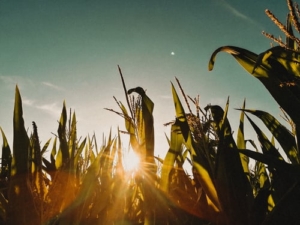
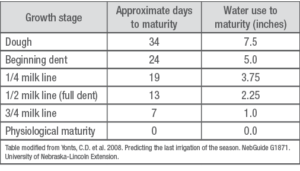
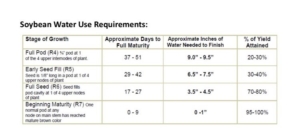
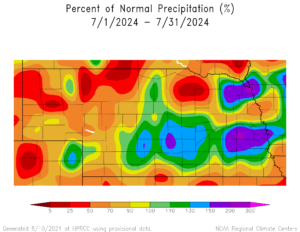
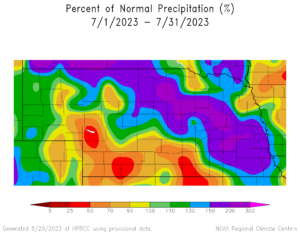
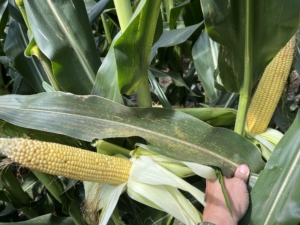 This disease bears monitoring over next few weeks as it’s greatest impact will be on late-season plant health. Those fields which show the highest incidence of the disease will be a prime candidate for early harvest.
This disease bears monitoring over next few weeks as it’s greatest impact will be on late-season plant health. Those fields which show the highest incidence of the disease will be a prime candidate for early harvest.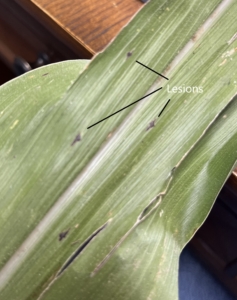 Impact from this disease will also be on late-season standability. We will update for any impact on harvest as the growing season progresses to the finish line. Also seeing some Gray Leaf Spot starting to come in on lower leaves in some fields, along with Northern Corn Leaf Blight lesions showing up in hybrids that are not as tolerant to this disease. Starting to see some Goss’s Wilt show up in the hailed areas. Overall leaf disease in corn is higher than the past few years.
Impact from this disease will also be on late-season standability. We will update for any impact on harvest as the growing season progresses to the finish line. Also seeing some Gray Leaf Spot starting to come in on lower leaves in some fields, along with Northern Corn Leaf Blight lesions showing up in hybrids that are not as tolerant to this disease. Starting to see some Goss’s Wilt show up in the hailed areas. Overall leaf disease in corn is higher than the past few years.